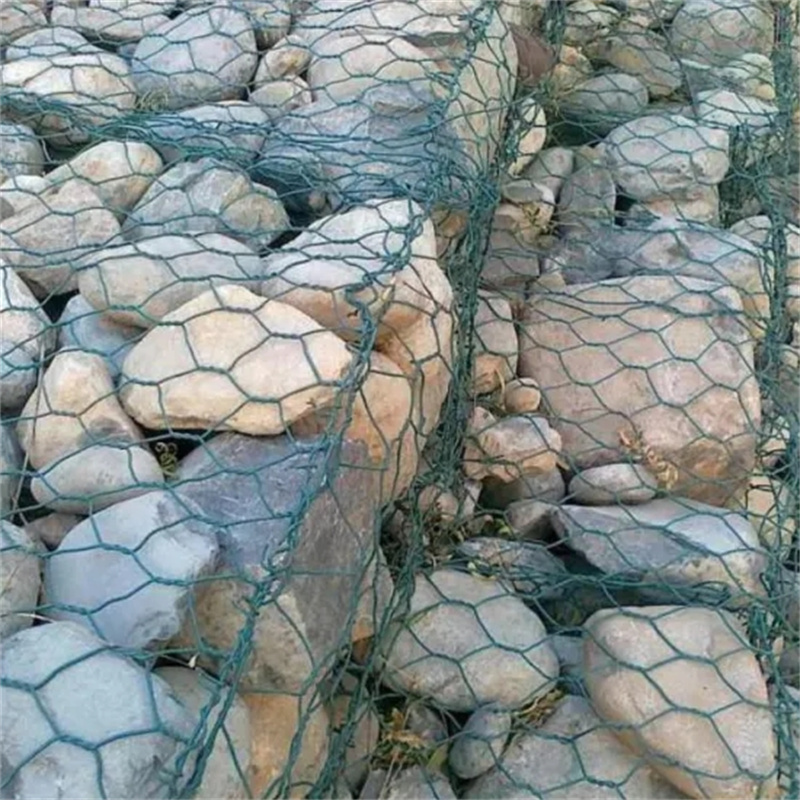ডিসে. . 05, 2024 15:05 Back to list
gabion wall drainage factory
The Importance of Drainage in Gabion Wall Construction
Gabion walls, known for their durability and aesthetic flexibility, have become increasingly popular in various construction projects. These structures, made of wire mesh filled with stones or other materials, are often used for erosion control, retaining walls, and decorative landscaping features. However, like any other construction project, the performance of gabion walls heavily depends on effective drainage solutions. This article explores the significance of drainage in gabion wall construction and the considerations that factories must keep in mind when designing and manufacturing these structures.
Understanding Gabion Walls
Before delving into drainage, it is essential to understand what gabion walls are and how they function. A gabion wall is essentially a structure where large wire cages (gabions) are filled with rocks, gravel, or other materials. They provide mass to retain soil and can absorb pressure from water and earth. While the strength of a gabion wall lies in its solid construction, the underlying factors affecting its longevity and stability include proper drainage.
The Role of Drainage
Water management is crucial in maintaining the integrity of any retaining structure. If water accumulates behind a gabion wall, it can create hydrostatic pressure that may lead to wall deformation, failure, or erosion of the backfill. This is where the concept of drainage becomes vital.
1. Hydrostatic Pressure Prevention An effective drainage system helps to manage water accumulation. Gabion walls designed with an integrated drainage solution allow water to flow through the wall, reducing the pressure exerted on them. This is typically achieved through the use of weep holes or gravel-filled drainage layers that permit the water to escape.
2. Soil Stability Maintenance Excess water can weaken the soil behind a gabion wall, increasing the risk of landslides or soil slippage. Proper drainage prevents erosion and helps maintain the soil’s integrity, ensuring that the gabion wall remains stable over time.
3. Longevity of the Structure By preventing water accumulation and allowing proper drainage, the lifespan of the gabion wall can be significantly extended. Less moisture trapped within the structure means reduced corrosion of the wire mesh and less degradation of the materials used in the gabions.
gabion wall drainage factory

Design Considerations for Factories
When manufacturing gabion walls with adequate drainage capability, several design aspects should be considered
1. Material Selection The choice of materials for both the gabion structure and the drainage system is critical. Stainless steel or galvanized wire mesh is preferred to resist corrosion. The fill material should be durable and able to facilitate drainage, such as larger stones that create voids for water movement.
2. Incorporating Drainage Holes Factories should ensure that gabion walls design includes weep holes or perforations. These openings must be strategically placed to balance water entry and exit, allowing trapped water to escape without compromising the structural integrity of the wall.
3. Gradient Design A slight slope or gradient behind the gabion can facilitate water flow toward drainage points. Factories need to ensure that designs account for this edge-leveling to prevent water pooling.
4. Additional Filters Utilizing geo-textiles behind the gabion can prevent soil from washing away while allowing water to pass through. This solution aids in maintaining the structural integrity of both the soil and the wall.
Conclusion
In conclusion, the importance of drainage in gabion wall construction cannot be overstated. Proper management of water can mitigate risks associated with structural failure, soil erosion, and overall degradation. Factories producing gabion walls must prioritize drainage design in their manufacturing processes to enhance the reliability and longevity of these structures. By understanding and implementing effective drainage solutions, they can ensure that gabion walls serve their purpose efficiently, withstand environmental pressures, and contribute positively to civil engineering and landscaping projects.
-
The Role of Galvanized Gabion Mesh in Riverbank Protection
NewsJun.26,2025
-
The Role of Gabion Basket Raised Bed in Sustainable Gardening
NewsJun.26,2025
-
Quality Assurance of Wire Mesh Gabion Baskets
NewsJun.26,2025
-
Installation Guide for Welded Gabion Box
NewsJun.26,2025
-
How to Choose the Right Gabion Box
NewsJun.26,2025
-
Different Types of Gabion Wire Mesh
NewsJun.26,2025
-
Why PVC Coated Gabion Mattress Is the Best Solution for Long-Term Erosion Control
NewsMay.23,2025






